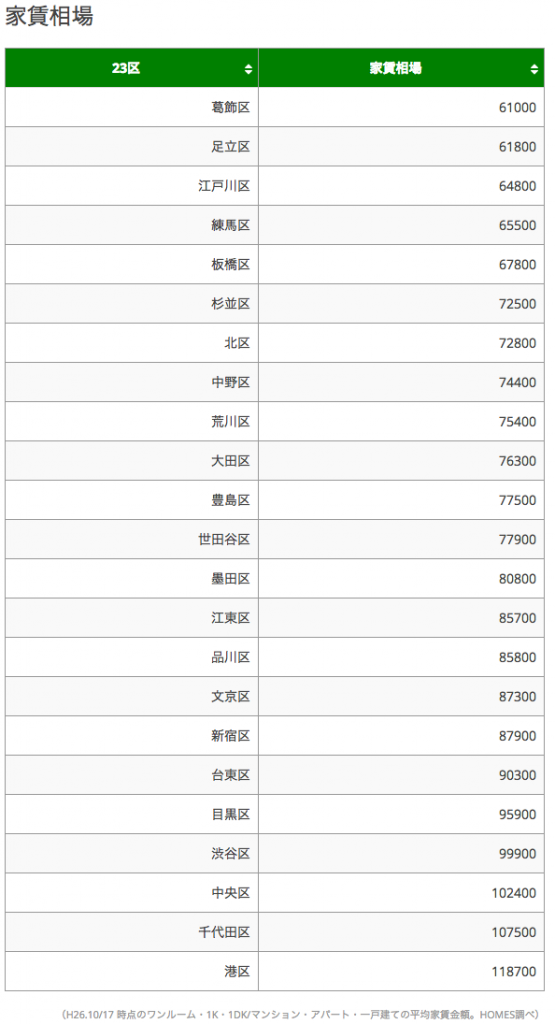
Hello, there! I’m Taku from Hidamari. It’s been rainy lately, and I’ve been feeling a bit down. I feel energetic today since it’s sunny outside, but I become incredibly unproductive when the weather is terrible.
Anyway, I’m going to write about “Ranking of the average rent of roomshare and apartments for single persons by Tokyo’s 23 districts!!” First, roomshare, which is different from sharehouse, is that individuals rent an apartment together, and they manage everything by themselves without any housing companies.
The average rent of roomshare by Tokyo’s 23 districts


Source: roomshare.jp
The image above is the result. It seems rent of roomshare in Tokyo becomes the same as the average rent in rural areas. Katsushika-ku is the cheapest area in Tokyo, and the highest is Minato-ku. By the way, the average rent of Kumamoto-city, the city I live in currently, is like below.

(Source: The average rent of Kumamoto Prefecture [HOME’S])
Comparing Tokyo and Kumamoto, I again realize how cheap the rent is in rural areas. The average rent of Chuo-ku in Kumamoto City, the most popular area in Kumamoto, is ¥42,500. On the other hand, Minato-ku in Tokyo is ¥65,000. The difference is more than ¥20,000.
The average rent of apartments for single persons by Tokyo’s 23 districts

Just as expected, the cheapest area is Katsushika-ku, and its average rent is from ¥60,000. Minato-ku is the highest, and its average rent is from ¥110,000. Katsushika-ku, the most cheap area to live in Tokyo, has relatively a positive image as ‘good old town’ since the area is the stage of the movie “Otoko wa Tsurai yo” (=”It’s tough being a man”) by Yoji Yamada, and of the manga “Kochira Katsushika-ku Kameari Koen Mae Hashutsujo” (=”This is the Police Station in Front of Kameari Park in Katsushika Ward”) by Osamu Akimoto. But, the area is the most inconvenient in terms of public transportation, and that’s why the average rent becomes so cheap.
Summary
It seems rent becomes higher than in rural areas, even if you share an apartment with someone in Tokyo. By the way, Kumamoto-city is one of the cities designated by government ordinance of Japan, and its population is about 730,000. Kumamoto-city is not the countryside that much, but it’s more like a middle-sized city, and neither good nor bad to live in. However, I think the initial cost and the living expenses can be saved by sharing an apartment in Tokyo. As a result, the total cost would not be so different from living alone in rural areas. Also, I personally think sharing culture is not so rational and won’t grow unless it’s in areas where many people get together like the metropolitan area. By looking at the data, I realize that sharing culture might grow a bit in rural areas, but it won’t be significant growth.
Moreover, I figured out that the average rent of Tokyo’s 23 districts is about two ~ third times higher than that of rural areas. I thought living in a provincial city is a better choice if I want to live in a good place without straining myself too hard. That’s all.















